Revised NCERT Solutions for Class 9 Science all chapters in Hindi and English Medium updated for session 2023–24. According to new rationalised NCERT Books published for 2024-25 exams, there are only 12 chapters in course. Class 9 Science NCERT solutions refer to the answers, explanations, and step-by-step solutions provided for the science textbook of the 9th grade in the National Council of Educational Research and Training (NCERT) curriculum in Bharat. These solutions are designed to help students understand and solve the scientific problems and concepts presented in the Class 9 Science textbook.
NCERT Solutions of Class 9 Science
Chapter 1. Matter in Our Surroundings
Chapter 2. Is Matter Around Us Pure
Chapter 3. Atoms and Molecules
Chapter 4. Structure of the Atom
Chapter 5. The Fundamental Unit of Life
Chapter 6. Tissues
Chapter 7. Motion
Chapter 8. Force and Laws of Motion
Chapter 9. Gravitation
Chapter 10. Work and Energy
Chapter 11. Sound
Chapter 12. Improvement in Food Resources
Class 9 Science NCERT Solution covers a range of topics including physics, chemistry, and biology. The solutions for these topics aim to provide a clear understanding of the scientific principles and theories covered in the curriculum. They guide students through solving various types of scientific problems and exercises appropriate for their grade level.
Learning science in school can significantly improve thinking skills and cognitive abilities. Here are several ways in which studying science enhances thinking skills in the context of school education. Science encourages students to question, analyze, and evaluate information and evidence. It promotes critical thinking by challenging students to make logical connections, identify biases, and assess the validity of claims and hypotheses.
Simplified NCERT Solutions for Class 9 Science
| Class: 9 | Science |
| Number of Chapters: | 12 (Twelve) |
| Contents: | Exercise Answers and Extra Questions |
| Content Type: | Text, PDF, Videos and Images |
| Academic Session: | CBSE 2024-25 Exams |
| Medium: | Hindi and English Medium |

Key features of Class 9 Science NCERT solutions cover a wide array of scientific concepts including motion, force, matter, atoms, cells, reproduction, and more. Solutions offer clear and detailed explanations of scientific theories, laws, and concepts to ensure students grasp the subject matter. All NCERT Solutions for grade 9 Science for 2024-25 and NCERT Solutions online and Offline Apps are Updated for new academic session.
Science education often involves solving complex problems. Students learn to break down intricate issues into manageable parts, formulate hypotheses, design experiments or investigations, and develop solutions. These problem-solving skills are transferable to various subjects and real-life situations.
Our online platforms Discussion offer features that allow students to ask questions and seek clarification on specific science topics or problems. This can be beneficial for clearing doubts and gaining a deeper understanding. Ask your doubts in Discussion Forum and share your knowledge with your friends and other users. For problems and questions, solutions provide step-by-step explanations, breaking down complex concepts into manageable steps. Solutions often include diagrams, illustrations, and charts to help students visualize abstract scientific concepts and phenomena.
9th Science Solutions in English & Hindi Medium
Solutions include a variety of practice questions and exercises that allow students to apply their understanding and develop problem-solving skills. Free download links for Class 9 Science NCERT Solutions and UP Board Solutions in PDF format free are given below. Tiwari Academy provide supplementary resources such as video lessons, quizzes, and study tips.
Science emphasizes the importance of careful observation and making inferences based on collected data. Students develop the ability to notice patterns, draw conclusions from observations, and make predictions.
These resources can complement the learning process and cater to diverse learning styles. Many solutions relate scientific concepts to real-life examples, making it easier for students to understand the practical relevance of the topics. All the solutions are updated for new academic session for UP Board, Delhi Board, MP Board, Gujrat Board, Uttarakhand Board, etc., who are following NCERT Books 2024-25 for their final board exams.
Many solutions relate scientific concepts to real-life scenarios, helping students understand the practical relevance of what they’re learning. A strong understanding of Class 9 Science concepts is crucial for pursuing science and related subjects in higher education. Exploring scientific concepts in Class 9 can help students discover their interests and potential career paths in science-related fields.
Science involves collecting, organizing, and interpreting data. Students learn to use mathematical and statistical tools to analyze data, which strengthens their quantitative reasoning and data interpretation skills.
Class 9 Science Main Points & NCERT Solutions
Chapter 1. Matter in Our Surroundings
Class 9 Science Chapter 1 describes Physical Nature of matter like matter is made up of particle and the size of these particles. It further explains the characteristics of the particle of matter like they have space between them, they are moving with some kinetic energy, and they attract each other with a particular force. We all know that there are three states of matter – Solid, Liquid and Gas. In Chemistry Chapter 1 of Class 9 Science, we will go through the properties of matter in different states. Changing of state with the application of temperature, pressure, or other factors are also important for the exams.
Science relies on empirical evidence to support claims and theories. Learning science reinforces the importance of evidence-based reasoning and teaches students to make decisions and form opinions based on data and facts rather than unfounded beliefs.
Chapter 2. Is Matter Around Us Pure
Class 9 Science Chapter 2 explains about all types of substances, whether it is pure or a mixture of two or more pure substances. Homogeneous and heterogeneous mixture and their properties are frequently asked in school exams of class 9 Science. We have to learn here about how many types of solutions are there, how to prepare these solutions and how to find the concentration of a given solution. After doing this, we will be able to understand about Suspension and Colloidal also. Properties of Suspension and Colloidal are also crucial as exams point of view. Separating the components from the mixture using various methods are given at the end of this chapter. We can apply these ways in day to day life to understand in a better way.
Chapter 3. Atoms and Molecules
Class 9 Science Chapter 3 deals with Law of Chemical Combination, Law of Conservation of Mass and Law of Constant Proportion. Here, we will study that Atoms and Molecules are the fundamental building blocks of all matter. What is an atom? How big are they? What are the ancient or modern symbols of atoms? These type of questions are new for standard nine students. Atomic Mass and their symbols usually start from grade 9 and play an important role in higher classes. We should understand carefully about important Molecules and their valency along with the knowledge of ions – cation or anion. Using Criss-cross method, writing the formula of any compound is the most important part of Chemistry Chapter 3 of Class 9 Science. Questions based on Molecular mass and Mole concepts are also crucial for the class test or school terminal exams.
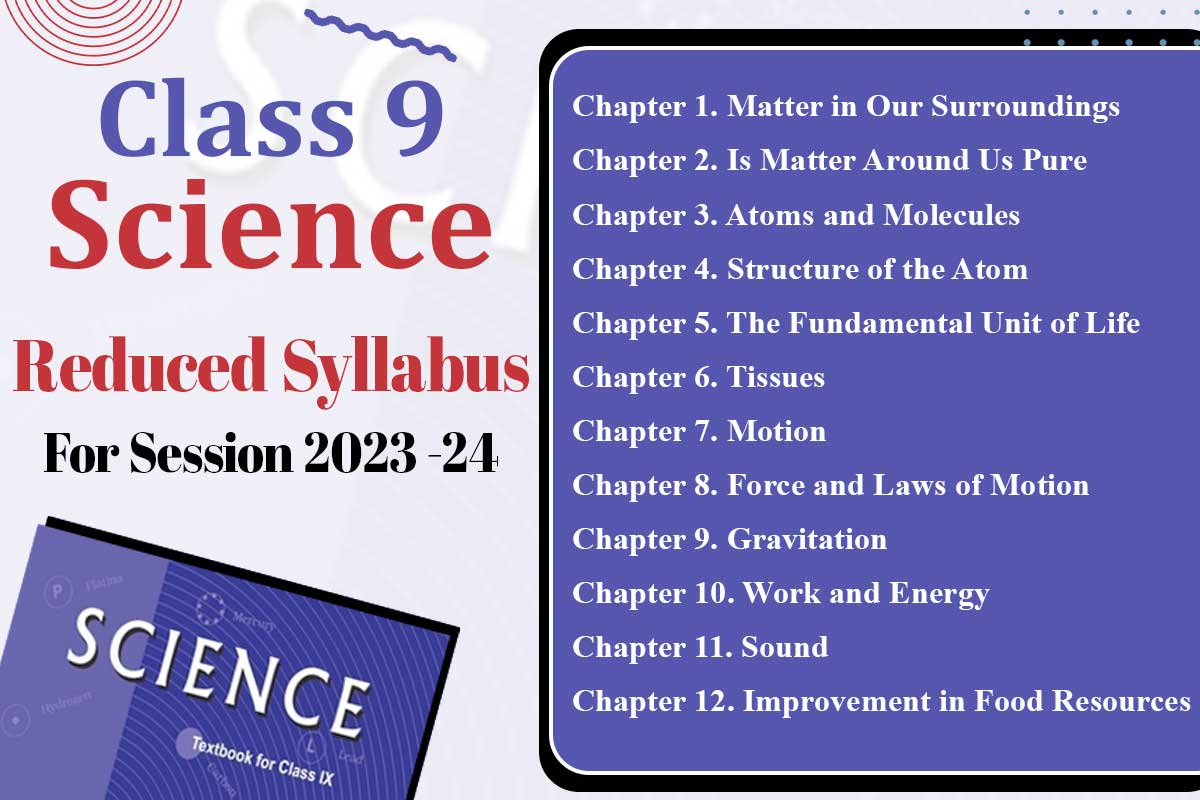
Chapter 4. Structure of the Atom
Class 9 Science Chapter 4 is based on sub-atomic particle like a proton – p, neutron – n and electron – e. It also explains the various steps of the discovery of the structure of atoms and its subparts. Structure of Atom includes the atomic models of J. J. Thomson, Rutherford and Bohr. Rutherford’s experiment, its observation and conclusion are considered as important topics of Chemistry Chapter 4 of Class 9 Science textbook. We have to learn here about Valency, Atomic Number, Mass Number and their correlation with each other. We should understand the difference between Isotopes and Isobars to remove any confusion in further classes.
Chapter 5. The Fundamental Unit of Life
Class 9 Science Chapter 5 is the first chapter of Biology in standard 9. This chapter tells us how Robert Hooke discovered the cell using a slice of cork. Cells are too small to see through naked eyes, but we can see the cell by microscope making temporary mounts of peels of onions. Here, we will be able to know about cells in the human body like Bone cells, Blood cells, Smooth muscles cells, Nerve cells, etc. The structural organisation of a cell, Plasma membrane and its phenomena with Isotonic, Hypotonic and Hypertonic solutions are briefly described in grade 9 Science, Chapter 5 Biology section. We should know about the function of Cell wall, Nucleus and Cytoplasm in a cell. A complete description of Plant cell and Animal cell with their components like Golgi Apparatus, Lysosomes, Mitochondria, Plastid, Vacuoles and Cell division is the main point of this chapter to study.
Chapter 6. Tissues
Class 9 Science Chapter 6 describes about the plant and animal tissues. Plant tissues include the explanation about Meristematic tissue – for the growth of plants and Permanent tissue – permanent in shape, size and function (simple and complex permanent tissues). Animal tissues cover the topics related to Epithelial tissue (also known as covering or protective tissue), Connective tissue, Muscular tissue and Nervous tissue. Nerve cells or Neurons are the fundamental units of the nervous system. Nervous tissues are made up of these Neurons. Neurons are the longest cells in the human body. An individual nerve cell may be up to a metre long.
Chapter 7. Motion
Class 9 Science Chapter 7 includes all the terms which describe the motion of an object. Most of the topics are based on the motion on a straight line or uniform motion. During the study of uniform or non-uniform motion, we will learn to find the average speed or speed during a specific duration. Chapter 7 of Class 9 Science contains many numerical problems in Physics following the three equation of motion. We should understand about the difference between velocity and speed as well as distance and displacement. Graphical representation of motion and the derivation of three equations of motion with a graphical method are frequently asked in school examination. Concepts of uniform circular motion and numerically based on it are also important for exams.
Chapter 8. Force and Laws of Motion
Class 9 Science Chapter 8 starts with focusing on the balanced and unbalanced force. Later on, it includes the impact of Friction force and Inertia also. The main motive to study Chapter 8 of Class 9 Science is to understand the laws of motion under the influence of force. Here, we will start from First law of motions and Inertia of body. Later on Second law of motion along with the law of conservation of momentum. We have to do all the intext questions and exercises questions based on particular on laws of motions and momentum. In the end, there are many reasoning questions based on the Third law of motion are given to understand about the law of Action-Reaction.
Chapter 9. Gravitation
Class 9 Science Chapter 9 is based on the concepts of Gravitation, Universal Law of Gravitation and Gravity. We should know that every object is attracted by other objects with a variable gravitational pull according to what the Gravitational Law states. The relation between Universal Gravitational Constant G and Gravitational Acceleration g is also important for terminal exams or class test. Chapter 9 of Class 9 Science also states about the difference between Mass and Weight considering the values of g. We know that G is constant, but the value of gravity varies according to the varying radius of Earth. Value of g is maximum at poles and least at the equator due to the elliptical structure of Earth. Concepts of Buoyancy, Buoyant force, Pressure and Thrust, Archimedes’ principle of floatation and Relative Density are the topic for exam preparation.
Chapter 10. Work and Energy
Class 9 Science Chapter 10 explains that Work and Energy are the same things only the states are changed. Work is concerted to different from of Energy or from Energy we can do work. Questions based on constant force and uniform motions are given as intext questions. Mechanical Energy is basically divided into two kinds as Kinetic Energy and Potential Energy. Kinetic Energy of an object is due to its motion whereas Potential Energy is due to its current position. The sum of Potential and Kinetic Energy is considered as Mechanical Energy. The other forms of energies are Heat Energy, Chemical Energy, Electrical Energy and Light Energy. The Law of Conservation of Energy, Work done, Power and Commercial unit of Energy are the main topics for numerical practice. The relation between 1 Unit and Joules are important for derivation as well as for numerical problems.
Chapter 11. Sound
Class 9 Science Chapter 11 deals with the production and motion of sound. We know that sound travels with different speed in different materials but does not travel in the vacuum as it needs a material medium to travel. Characteristic of a sound wave or Longitudinal wave and concepts of Compression and Rarefaction with Frequency, Amplitude and Speed is important for this segment of class 9 Science. We should also know about the Intensity, Softness, Loudness, Low and High Pitch of sound waves. Most of the numerical in Chapter 11 of Class 9 Science is based on speed, wavelength and frequency. Reflection of sound, including the concept of Echo, are important for conceptual questions. At the end of chapter 11 of 9th Physics, the concepts of Reverberation, instruments based on multiple reflections of sound, range of hearing, Sonar and application of Ultra-Sound waves are given for practice.
Chapter 12. Improvement in Food Resources
Class 9 Science Chapter 12 is based on various methods of improvement of food resources. Improvement of various crops like wheat, rice, maize, millets, etc. yield and improvement of crop variety are an exciting topic to read. Crop production management includes nutrient management like Compost and vermi-compost, Green manure, etc. manure and fertilisers. Irrigation, cropping pattern, crop production management, storage facility, animal husbandry, cattle farming, poultry farming, egg and broiler and fish production are the main points of focus.
Class 9 Science NCERT solutions align with the CBSE board exam pattern and help students prepare effectively for their science exams. Additional notes or explanations may be provided for parents and teachers to assist in explaining concepts to students. Class 9 Science NCERT solutions lay the groundwork for more advanced science concepts that students will encounter in higher grades.
These solutions serve as valuable resources for both students and educators, aiding in learning scientific concepts, practicing problem-solving, and achieving academic success in the subject. Class 9 Science NCERT solutions can be found in the official NCERT textbooks, educational websites, and online platforms like Tiwari Academy.
Feedback and Suggestions for Class 9 Science
We have updated all the NCERT Solutions 2024-25 for new session in PDF format. Class 9 Science NCERT solutions serve various important purposes for students, educators, and the learning process as a whole. Solutions provide clear explanations of scientific concepts covered in the Class 9 curriculum. They help students understand the fundamental principles of physics, chemistry, and biology.
While science is often associated with empiricism and objectivity, it also encourages creative thinking. Students are encouraged to devise innovative experiments, propose novel hypotheses, and explore unconventional solutions to scientific problems.
PDF file related to all chapters are given on the chapter’s page. Solutions guide students through solving a variety of scientific problems. This helps them develop problem-solving skills and logical thinking abilities. If you are facing in downloading these pages, please contact us for help. Solutions include practice exercises that allow students to apply what they’ve learned. Regular practice using these solutions helps reinforce understanding and memory retention.
NCERT Solutions Offline Apps are also based on latest NCERT Books 2024-25. Download these apps for offline use. If you have downloaded these apps once, there is no need of internet connection later on.
How to Study Science in Class 9 to Score Maximum Marks
According to NCERT textbooks published for session 2024-25, there are total 12 chapter in Class 9 Science. If you are going to prepare for terminal exams, you have to focus on all chapters. Tiwari Academy is known for providing educational resources and solutions for various subjects, including Class 9 Science. Here are some potential advantages of studying Class 9 Science at Tiwari Academy. Follow the steps mentioned here to know how you can score 100 percent marks in Science doing less efforts. It can help you, and you can ask the question to know about the little tips tricks that can help to solve the question. We typically offers comprehensive solutions to the Class 9 Science NCERT textbook. These solutions often include detailed explanations and step-by-step instructions for solving problems and understanding concepts.
- Step 1: Plan to Score 100% Marks in class 9 Science Exams.
- Step 2: Complete one topic daily irrespective of time spend.
- Step 3: Summarize the whole lesson and practice board questions.
- Step 4: Be Punctual and regularly follow Study Time Table.
- Step 5: Give Priority to NCERT Textbook and Exemplar Book only.
Step 1: Plan to Score 100% Marks in class 9 Science Exams.
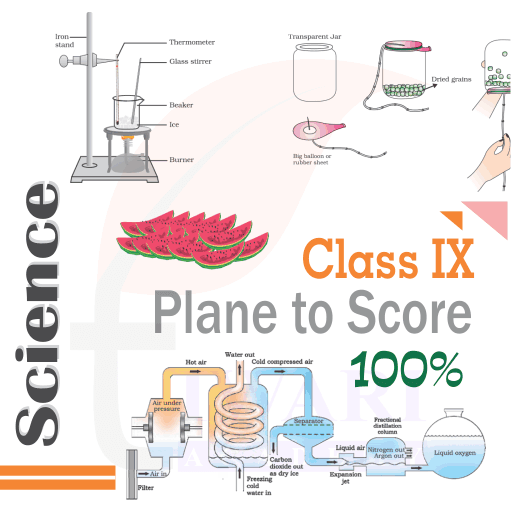
Step 2: Complete one topic daily irrespective of time spend.
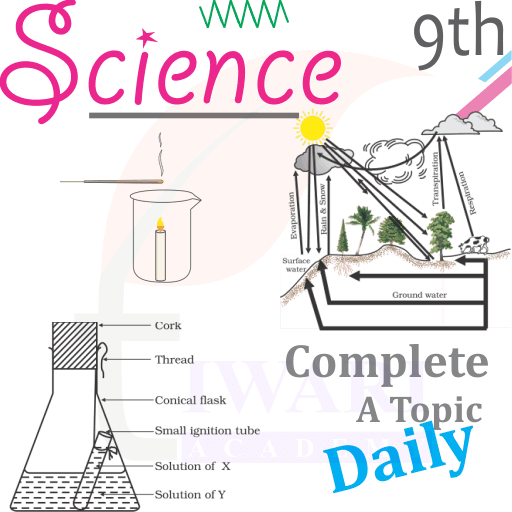
Step 3: Summarize the whole lesson and practice board questions.

Step 4: Be Punctual and regularly follow Study Time Table.
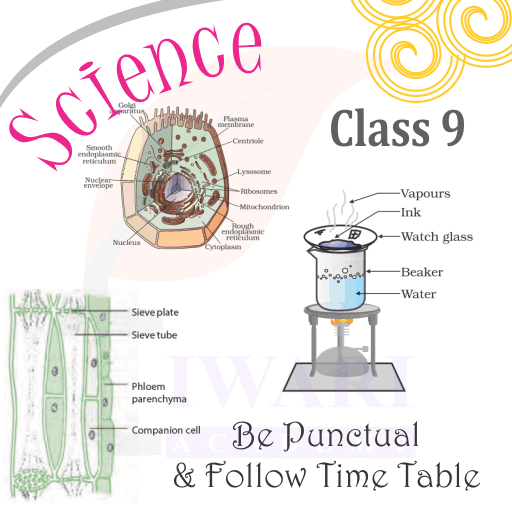
Step 5: Give Priority to NCERT Textbook and Exemplar Book only.
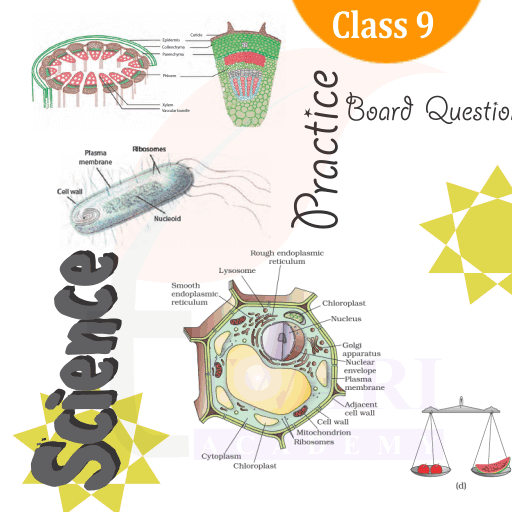
Students can use solutions to verify the accuracy of their answers while working on assignments or practice exercises. This encourages self-assessment and correction of mistakes. Class 9 lays the foundation for board exams in Class 10. Solutions provide a framework for practicing questions similar to those that might appear in exams, helping students prepare effectively.
In essence, Class 9 Science NCERT solutions provide structured guidance for learning and understanding scientific concepts. They play a vital role in building a strong foundation for advanced science education and fostering an appreciation for scientific inquiry and discovery.
Solutions offer explanations that parents and teachers can use to clarify concepts to students. This fosters a collaborative learning environment. Teachers can use solutions as a guide to explain concepts effectively in the classroom. They offer insights into age-appropriate teaching methods. Solutions often include interactive elements like practical activities and experiments that make learning science engaging.
How to score well in class 9 Science First Test Exams?
Questions in exams are generally asked from the exercises given in the end of exercises or intext questions given in between the chapter. Students should read the NCERT Textbook for class 9 Science carefully and just note down (and underline) all the important terms occurring in the paragraphs. After completing the chapter, it will help a lot in revision. Spend about 1 to 2 hours for studying science in class 9 to score a significant score in class 9 Science.
How many chapters are difficult in class 9 Science Book?
As per the new rationalised NCERT textbook issued for 2024-25, there are total of 12 chapters in 9th Science as per NCERT Textbooks. Most of the chapters are easy but time consuming. As per most of the students, Chapter 7, 8, and 10 are consider as difficult one. If you spend time with any chapter it will appear as an easy one otherwise seem as a most difficult chapter in book. There is no shortcut to learn science in 9th standard, only hard work tends to success.
How many chapters are there in class 9 Science Chemistry Section?
First four chapters of class 9 Science is for Chemistry sections. The name of the chapters are as follows:
1. Matter in Our Surroundings
2. Is Matter Around Us Pure
3. Atoms and Molecules
4. Structure of the Atom
Out of these four chapters, the chapter 3 and four are most important. The concepts used in these two chapters are also frequently asked in class 10 Science.
Which is the best book to prepare Class 9 Science First Term Exam?
NCERT is not only written in simple language but the reference pictures are also very good to understand the fact of science. So, if a child study with NCERT textbooks, he would be able to score good marks easily. If someone need more practice after completing the NCERT, he must go through the NCERT Exemplar books.


